|
I consider myself lucky that, as fan of horror movies, I have a partner who enjoys watching them as much as I do. She has a particular fondness for Tod Browning’s Dracula, and regards the early sequence of that film, in which the Count and his wives climb silently out of their coffins, as one of the creepiest ever committed to film. I’m not about to argue. When the film was meticulously restored by Universal for its 2017 Dracula: The Complete Legacy Collection Blu-ray release, we were finally able to see the film looking and sounding as good as it doubtless did to cinema audiences back in 1931. For me, it was a genuine revelation, so used had I become to the worn and damaged prints that were the source of all home video releases. As my partner had at that time yet to make the move to Blu-ray, I bought her the DVD edition of this set for her birthday, fully expecting it to contain standard definition transfers from the same restorations. It did not. The transfers were the same imperfect ones that graced the earlier release of this particular collection, complete with visible wear, some picture instability, indistinct detail, and audible crackle and hiss on the soundtracks. Mortified, I began searching for an alternative present, but thought might as well come clean about the discs that I’d purchased before sending them back. My partner’s response really surprised me. “Oh, I prefer it when they look and sound like that!” she said with a delighted smile. “I think it makes them look much creepier, like they seemed when I was a child.” My original choice of present was thus gleefully accepted, but I remained a little bemused by her statement. After watching director Ramón Peón’s 1933 La Llorona, which was restored from a severely damaged 16mm projection print as the original negative and all 35mm prints had been lost, I think I finally get it.
La Llorona – which tends to be translated as ‘The Wailing Woman’ or ‘The Crying Woman’) – is an adaptation of a Mexican folklore tale whose fame within its home country has long since spread beyond national borders. I’m not kidding on this score – a quick search on IMDb for the title returned well over 100 feature films, shorts, and TV series episodes. Just recently, I mentioned to a friend that I was reviewing an early film adaptation, but confused him with my probably feeble attempt at the correct Spanish pronunciation. As soon as spelt out the title for clarity, he instantly recognised it and began reeling off several of the more recent feature adaptations. The 1933 film under examination here is believed to be the first, and also has the distinction of being the first Mexican horror film with synchronised sound.
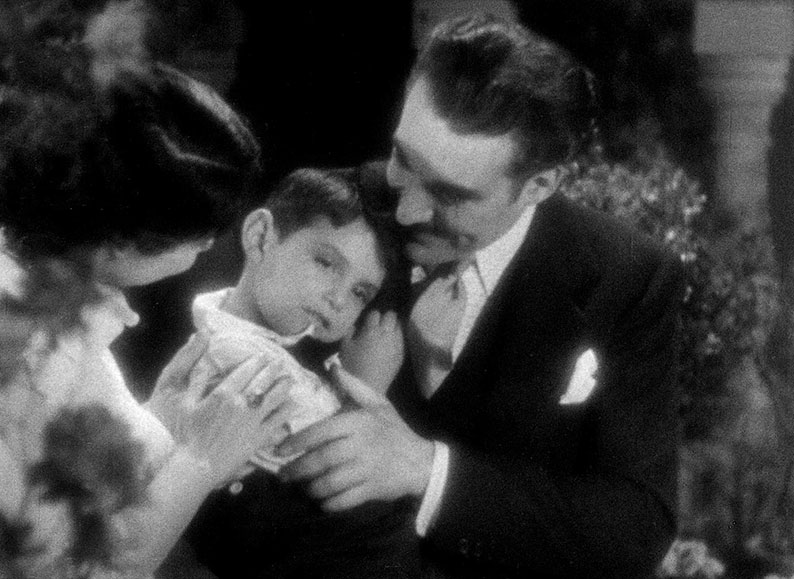
If you don’t know the story then I’d suggest that’s the best way to approach this particular adaptation, as one of the key things that defines the legend is not revealed until the halfway mark of the film, and thus plays as something that we’re meant to be surprised and even startled by. Then again, even for those familiar with the legend, the film still has a surprise up its sleeve in the changes it makes to how the defining deed of is done, which differs from that of its folklore origins.
As the film opens, a man is seen walking (well, more like shuffling drunkenly) down a street at night when he hears a terrible, mournful wail and expires on the spot. At the hospital to which his body is taken, the medical students suggest that the man’s fatal heart attack was triggered by the sight of a midnight ghost. This is countered by affable Dr. Ricardo de Acuña (Ramón Pereda), who reminds his students that cases like this are clinically common, and cheerfully dismisses supernatural phenomena as figments of the imagination. In the real world, I’d be standing beside him and nodding in agreement, but in a genre movie we all know that this means he’s due for an education in the existence of paranormal activity. Or is he?
Back on home turf, Ricardo and his wife Ana Maria (Virginia Zurí) are overseeing a clover-themed party to celebrate the fourth birthday of their son Juanito. Clearly, the children playing the party guests were not actors (this is confirmed in the special features, and explains why they occasionally look directly at the camera) and were probably sat down at the table with food and drink and encouraged to interact with each other while the camera rolled. This early example of staged documentary footage in a fictional drama certainly provides Peón with plenty of cute kiddie birthday party material, a tad more, perhaps, than the scene really requires. As the scene concludes, it’s made clear just how devoted Ricardo and Ana Maria are to Juanito. What could possibly pose a threat to this sublimely happy family unit?
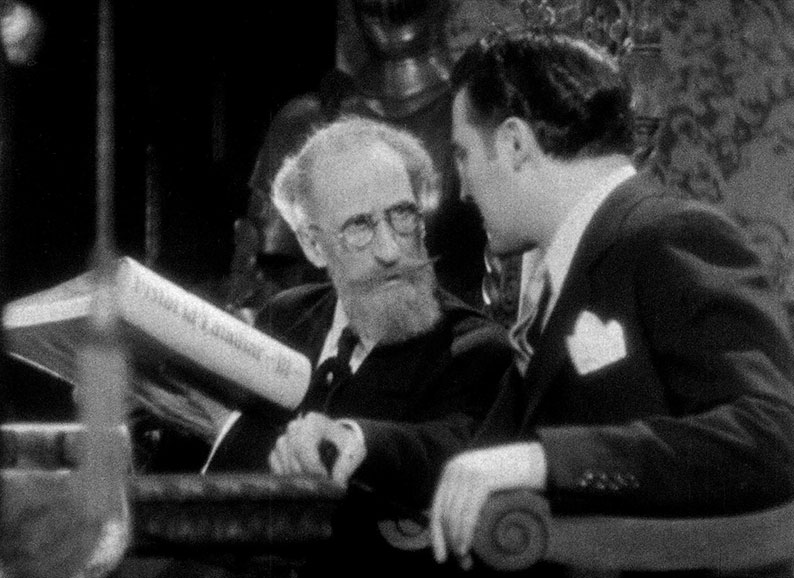
The house, it transpires, is owned by Ana Maria’s father, Don Fernando de Moncada (Paco Martínez), whose manservant Mario (Carlos Orellana) is a daft old duffer who is probably intended as the film’s comedy relief. It's when Ana Maria leads Juanito up to bed that Don Fernando asks to have a quiet word with Ricardo, whom he reminds (largely for our sake) that his own first-born son mysteriously disappeared shortly after his fourth birthday, and was found a few days later with a fatal stab wound to the chest. On top of that, his own older brother also died the same way. Now that Juanito has turned four, Don Fernando fears that the same fate might befall the boy. Unsurprisingly, the rational Ricardo explains these past events away as the sort of coincidences that could happen to any family as large as theirs, but Don Fernando has what he believes is evidence of a long-standing curse. As he reads from a weighty historical volume, a mysterious black-robed and hooded figure listens in, and the film hops back to the 16th Century to a time when the country was ruled by Don Luís de Velasco. It’s here that the story of La Llorona begins to unfold.
With the likelihood that many of you reading this may be unaware of the La Llorona legend, I’ve for once elected not to go into detail about how the story subsequently unfolds. I will note, however, that it’s in this extended flashback that the age of the film and imperfect nature of the restored print are able to play they biggest tricks on an audience more familiar with pre-Code era American horror. When we watch an American genre film from the period, there are certain things we can be reasonably sure that we will not see, and the fact that this restoration of La Llorona looks and sounds (in terms of soundtrack quality, rather than the language spoken) like how these Hollywood movies did for so many of us for so many years can’t help but subconsciously impose the same set of censorial rules. It thus comes as a bit of a jolt when this 1933 film includes (those new to the story may want to hop to the next paragraph to avoid possible spoilers) a soon-to-be-married man who is secretly having an affair with another woman, a couple who clearly sleep in the same bed (twin beds were the norm under the Production Code), a child that has been born out of wedlock, an on-screen suicide, and the off-screen murder of two children.
Having outlined the origins of the curse and revealed the presence of a masked figure who hides in the sort of secret passageways that all such big old movie houses seemed to have in films of this era, when the story returns to the present day, we’ve been given enough evidence to strongly suggest that the now sleeping Juanito really could be in mortal danger. What remains uncertain is the precise nature of the threat. In the flashback, the suggestion is that it will be supernatural, but the hooded figure that we see eavesdropping on Don Fernando’s tale appears to be very human. Indeed, the question of whether the paranormal really is the twaddle that Ricardo dismisses it as at the start is left hanging until the final scene. Whether it is confirmed or debunked there is not for me to say.
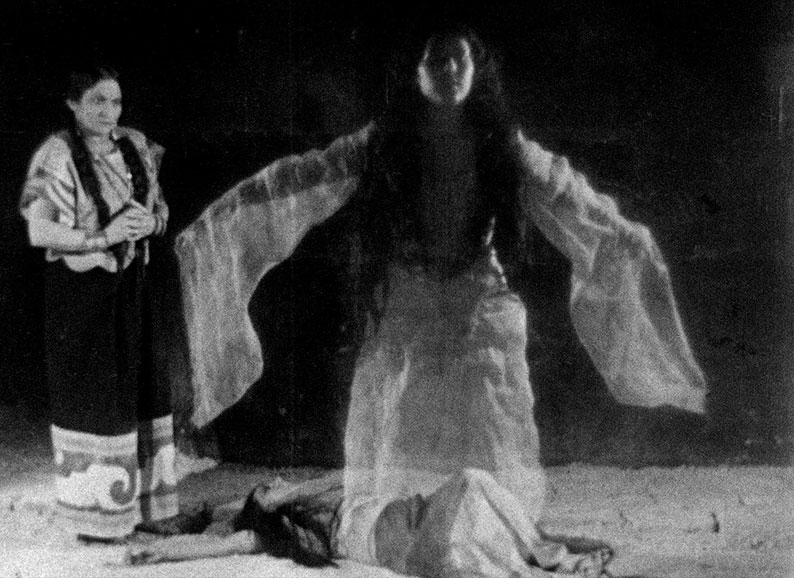
There’s probably a debate to be had over whether La Llorona actually qualifies as horror cinema in the usually accepted sense, although it’s worth remembering that the film was made when horror was not yet a fully formed and established genre. That said, the fact that it has even a small supernatural element grants it a membership card, even if the element in question – which includes an early version of a favourite ‘spirit leaving the body’ effect – is primarily part of a story related by one of the characters, and is thus open to interpretation. For the most part, the film plays out not as horror but a tragic drama, one in which a woman who is wronged by a man that she loved and trusted enacts a grim revenge that is set to impact on subsequent generations of the wrongdoer’s family.
Such uncertainty of classification shouldn’t take away from what is still an involving and intriguingly spun tale. The story-within-a-story structure works rather well, even if the lavish costumes and what looks like cathedral interior location work in the main flashback suggests this is where most of the budget was spent. These sequences prove unexpectedly diverting, however, containing as they do the sort of love triangle that was apparently common in Mexican cinema of the day, a not terribly convincing but energetic sword fight, and what was likely the first optical effects work in Mexican sound cinema. Later, there is a second, far shorter and lower budgeted flashback that reveals more about how and why this curse has (or has not) affected Ricardo’s family. This also includes an inventive use of double exposures, and is bolstered by an impressively low-key performance by María Luisa Zea as the wronged and increasingly tortured Doña Marina.
I enjoyed La Llorona, and have deliberately avoided revealing specifics of the plot for fear of ruining what will likely catch newcomers to this oft-told story by surprise. Cinematically, it’s livelier than a fair few of its Hollywood brethren of the day, in its shot variety, its use of camera movements, and its creatively employed optical effects. It includes elements that would be taboo in British and American films for some years to come – which include a fatal injury that is shown to have bled profusely – and makes effective use of its three narrative timelines, each of which tell interesting and connected tales. It’s a fascinating and welcome rediscovery, one that paved the way for what the first full-blooded Mexican horror film of the sound era, The Phantom of the Monastery, which is being simultaneously released on Blu-ray by Indicator. Watch this space…
When it comes to restorations of early sound era films, we’ve been somewhat spoiled in recent years, with small miracles being worked on movies that had previously seemed damaged almost beyond anything close to a pristine revival – the above-mentioned work done by Universal on their classic monster movies is a fine example. But the process is still dependent on the quality of the source material, and the challenge facing the good people who worked on La Llorona was considerable. For years it was believed to have been a lost film, until a single 16mm projection print was discovered, one that was, in the words of La Llorona producer José Calderon’s great-granddaughter Viviana García Besné, “in horrible shape,” and blighted with many instances of serious damage – check out the frame grabs included in the Ghosts of the Past documentary, one of which I've grabbed for comparison below.
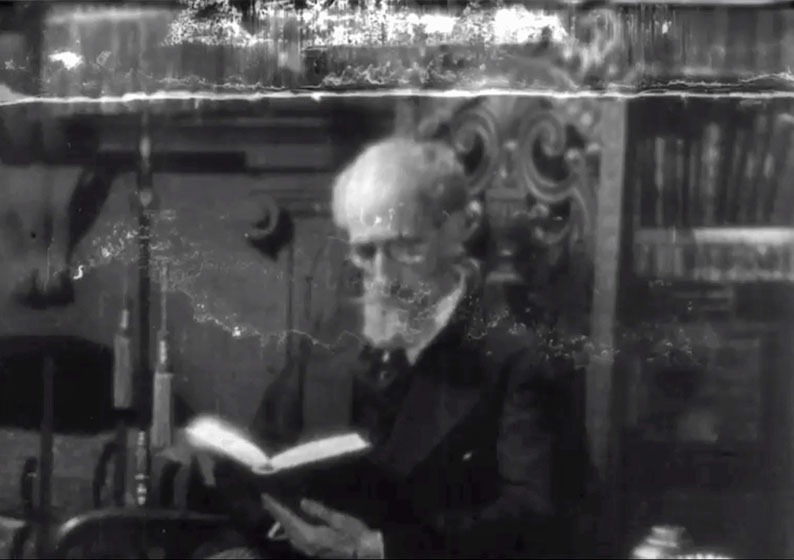
Before the restoration (above) and after (below)
)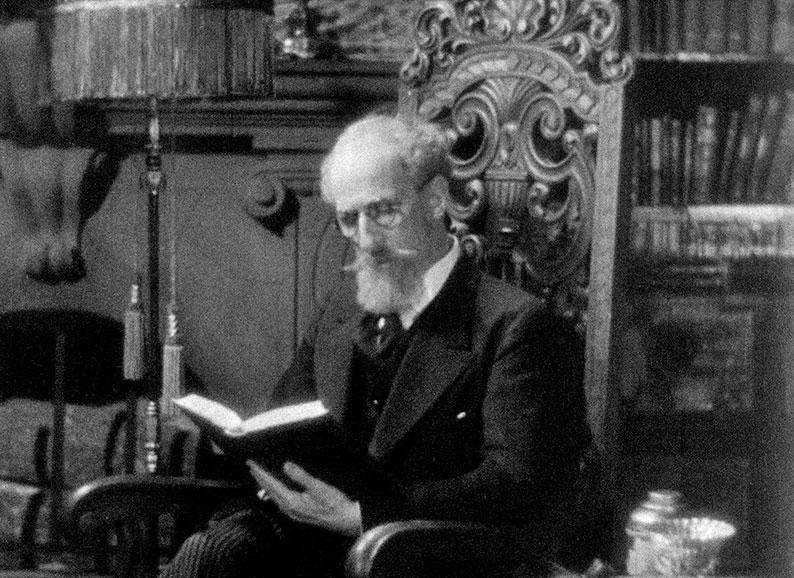
This new 2K restoration from the only surviving film element was created by the Cinema Preservation Alliance and completed in 2021 by Permanencia Voluntaria as a collaboration with Filmoteca UNAM, Academy Film Archive and Cinema Preservation Alliance, and all concerned have done a remarkable job. That the image is not as sharp and the detail not as crisply defined as it would be from a 35mm negative is inevitable, as is the more visible grain and remaining traces of damage and wear, but given the restrictions imposed by the format and condition of the source material, this is perfectly acceptable and in no way detracts from the viewing experience. Indeed, as I suggested above, in some ways it transported me back to my childhood, when I first encountered old prints of the classic Universal horror movies through late night television screenings – it even enhances the film’s status as a work rescued from cinematic oblivion. Within these restrictions, it’s worth appreciating the well-balanced contrast and inky black levels, the minimisation of picture jitter, and the sheer amount of dirt and damage that has been reduced in prominence or completely eliminated.
The Linear PCM 1.0 mono soundtrack has also undergone some restoration from a badly printed optical original in which the voices were apparently difficult to make out, and while there are the expected restrictions in the dynamic range and a frequently audible background hiss, the dialogue is now always clearly legible, and there are no alarming pops or bangs of damage. Like the picture, this must have been a job and a half to bring up to the standard here.
English subtitles for the Spanish dialogue kick on by default but can be switched off if you so desire. Pleasingly, optional English subtitles for the deaf and hearing impaired have also been included.
Audio Commentary with Stephen Jones and Kim Newman
The dream team of genre writers Stephen Jones and Kim Newman once again prove to be a fountain of information and acute observations, on the film, the legend of La Llorona and its origins and variations, the character’s numerous film incarnations (which include an appearance in Pixar’s Coco), and early Mexican cinema in general. As ever, their enthusiasm is so infectious that I found myself wishing I was sitting with them and joining in with their discussion. They talk about the various genres that the film falls into, a bad guy who initially comes across as the hero, the differences between Spanish language and American horror cinema of the day, the historical origins of the film’s second flashback, the religious morality, and much more. Newman also makes a persuasive case for why the Spanish singer in David Lynch’s Mulholland Drive is his favourite film incarnation of La Llorona.
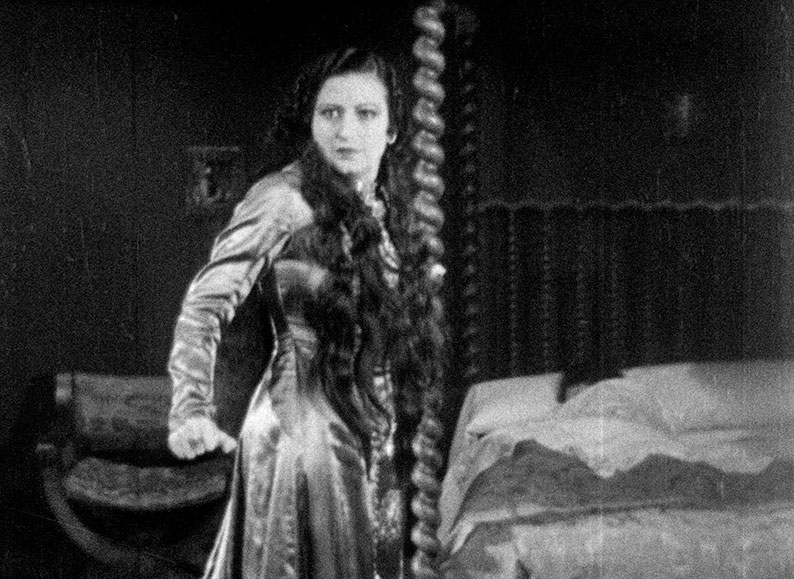
Ghosts of the Past (17:01)
A 2021 documentary by Viviana García Besné, the great granddaughter of La Llorona producer José Calderon, that offers a personal history of the film and its restoration. It includes some intriguing archive photographs and footage, plus home movie material shot by Besné following the film’s rediscovery, when she screened a VHS copy for older family members and friends, including her great-aunt Lilia, who was one of the children in the birthday party scene. Some details of the restoration are revealed (I could happily have spent more time on this), and at one point Besné suggests that the damage to the projection print is evidence of the energy generated by the film being enjoyed by audiences, which I thought was rather lovely.
Abraham Castillo Flores: Transcending Time (17:49)
With the look and the dress sense of someone who is visually expressing that he works in the arts, head programmer of Mexico’s Mórbido Film Festival, Abraham Castillo Flores, delivers (in English) a terrific examination of the film, the La Llorona mythology, and early Mexican genre cinema. Flores really knows his subject and is as infectiously enthusiastic about it as Kim Newman and Stephen Jones, and the information comes so thick and fast that I had to watch it a second time to pick up on the details that I missed. Subjects covered include how the arrival of sound impacted early Mexican cinema, how close one of the actors in La Llorona came to having a fatal accident on set, the search for an appropriately unsettling cry for the Wailing Woman, the origins of the design of an Aztec ring and stone statue that appear in the film, and more. He does give some coverage to subsequent cinematic takes on the story, but notes, “I should also mention that there’s been many Llorona films made in the US, but of those I’d rather not even talk.”
Lunas y estrellas (1:38)
This is unusual but definitely of interest. When films are restored from projection prints, the reel-change markers known as ‘cigarette burns’ are almost always digitally removed. Although that was also the case here, the markers themselves were unusual enough to be complied into this short featurette (and it is short – most of the running time is spent on introductory captions and production credits), with some of them being star or crescent moon shaped instead of the standard circle.
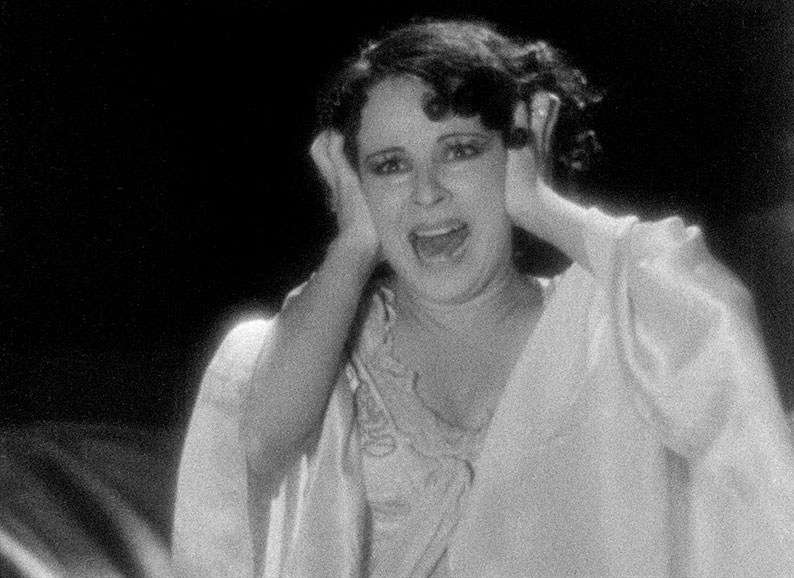
Booklet
Full credits for the film are followed by an excellent essay by PhD Musicology candidate and researcher Emily Masincup, whose focus on the film’s use of sound and the human voice I found particularly fascinating. Up next is a 1932 article by Mexican writer and historian Luis González Obregón from El Nuevo Mexicano, a Spanish-language American newspaper based in New Mexico (full marks to Indicator’s researchers here), that explores the La Llorona myth and its pre-colonial origins – as someone who has done his own research into the legend, I still learned a few things from this consistently interesting piece. This is followed by a new essay by Valeria Villegas Lindvall, which looks at the enduring nature of the La Llorona myth, the flood of subsequent film adaptations, and the rise of Mexican horror cinema in the 1950s. Next is an unsigned piece that appeared in Mexico City’s El Universal newspaper on the day that La Llorona had its premiere, modestly titled, La Llorona: A Film of Merit, after which are extracts from three contemporary reviews. Finally, there is a welcome piece by Peter Conheim on the film’s restoration, which reveals that the 16mm source print “was at least three generations removed from the primary source,” and includes information on the film’s unusual reel change markers. As ever, the booklet is handsomely produced and illustrated with photos and promotional artwork.
A most welcome rediscovery of film that occupies an important place in South American film history, one that offers an intriguing take on a home-grown legend that has achieved international fame and is still being adapted into feature films to this day – 2019 alone gave us the American The Curse of La Llorona and the Guatemalan/French production, La Llorona. That the restoration team were able to transform the severely damaged picture and sound of the 16mm projection print they had to work from into something so watchable and clearly audible is a testament to their collective talent and dedication, and Indicator has supplemented the typically strong transfer with a select but perfectly targeted collection of special features. I’ve no problem at all warmly recommending this one.
|